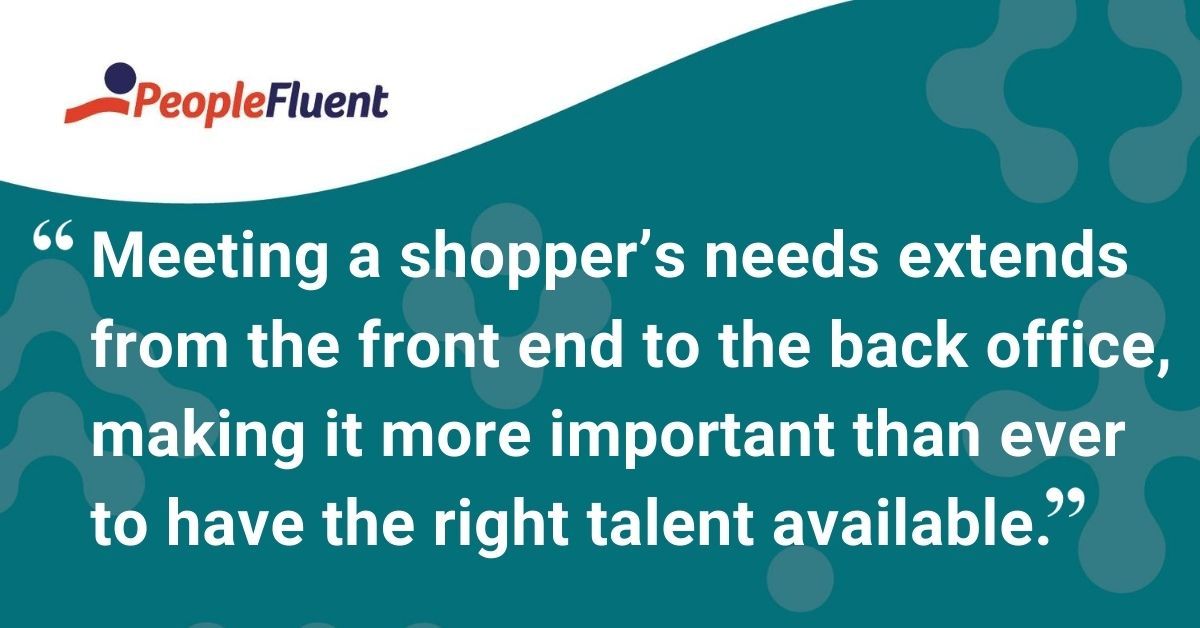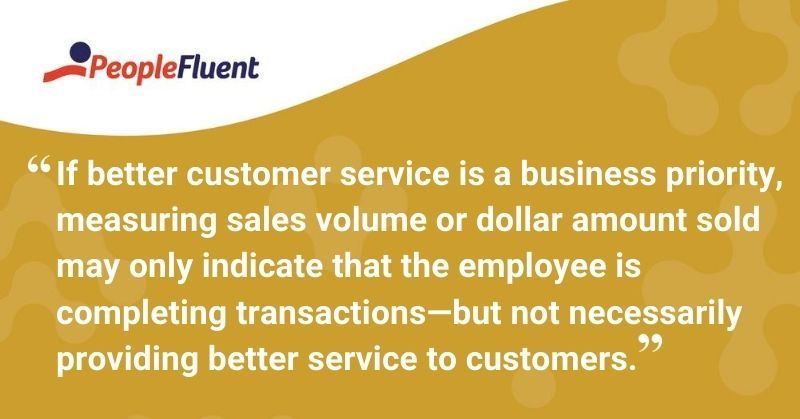Published: Nov 6, 2018Time to read: 4mins Category: Talent Management
Performance Management for Retailers: Giving New Meaning to “Retail Therapy”
Retailers face a cut-throat environment: The economy is tight, competition is fierce, and expectations for higher service and an outstanding customer experience are escalating. And one of the hottest battlegrounds is in customer service, where retailers hope to build loyalty and boost profits.
Consumer enthusiasm often goes beyond getting a great deal or the thrill of purchasing designer jeans or the latest iPhone. Shoppers crave a memorable, exhilarating shopping experience that satisfies the need for retail therapy and makes them feel good.
Masters of customer experience know that meeting shopper’s needs extends from the front end to the back office, making it more important than ever to have the right talent available. Effective performance management can drive more customer-centric service and better store performance, aligning employee goals with the business priority of exceptional customer service to deliver better retail therapy. And this, in turn, drives business success.
Having processes in place to support performance practices, identify top performers, and quantify the development needs of the workforce is crucial.
So how can retailers effectively use performance management to deliver higher levels of service and motivate the entire workforce from the hourly employee to operation and management professionals? Here are 4 ways to maximize the performance management process.

More from the blog: '4 Ways Talent Managers Can Boost Employee Morale'
1. Have Good Data
Different sales environments require different types of expertise. So it's critical to know what skills you have access to and how they can be leveraged.
For example, individuals on the sales floor at a big-box electronics store should be well versed in the features and benefits of different devices to help consumers make the right purchase decision. Having accurate data can help organizations understand who their best resource is and how they should be deployed.
2. Connect the Customer Experience to Performance
If better customer service is a business priority, measuring sales volume or dollar amount sold may only indicate that the employee is completing transactions—but not necessarily providing better service to customers.
Surveys can be used to gain insight into customer expectations as well as how well an associate met their needs. Then, share that feedback with employees to make the connection between their performance and customer satisfaction. Setting goals and having a consistent process for assessing employee interactions with customers can ensure that individual performance aligns with business needs.

Keep reading: 'How CHROs Can Maintain a Productive Workforce During Remote Work'
3. Train Employees to Go the Extra Mile
Building a culture of success requires understanding the attitude, behaviors, and skills necessary to excel and providing regular feedback so employees understand how well they're delivering on those expectations.
For example, an aggravated customer may be looking for an empathetic ear and quick resolution to their issue. Helping employees develop that skill set can be the difference between a customer who continues to patronize a retailer despite an issue and one that takes their business elsewhere.
4. Simplify Performance Management
Make sure performance management processes are intuitive and easy to execute. The right talent management system can help align talent with strategy and ensure employees and managers are spending time on what matters most: conversations that power performance—not managing a performance appraisal process.
Ultimately, consistent and outstanding customer service cannot be wholly driven by processes in a training handbook. At least part of it comes naturally from employees who are in the right roles to match their skills, who are engaged and involved with their work, and who understand the success metrics—including customer service—that they're being measured against.
Consistent, comprehensive performance management is the strongest tool at HR’s disposal to create this environment in the workplace. And that doesn't just apply to retailers.
Discover How Performance Software Helps Build a Culture of Support
Guide people on a path of continuous improvement, excellence, and achievement. PeopleFluent helps you support your people, so they exceed their goals and drive business outcomes.